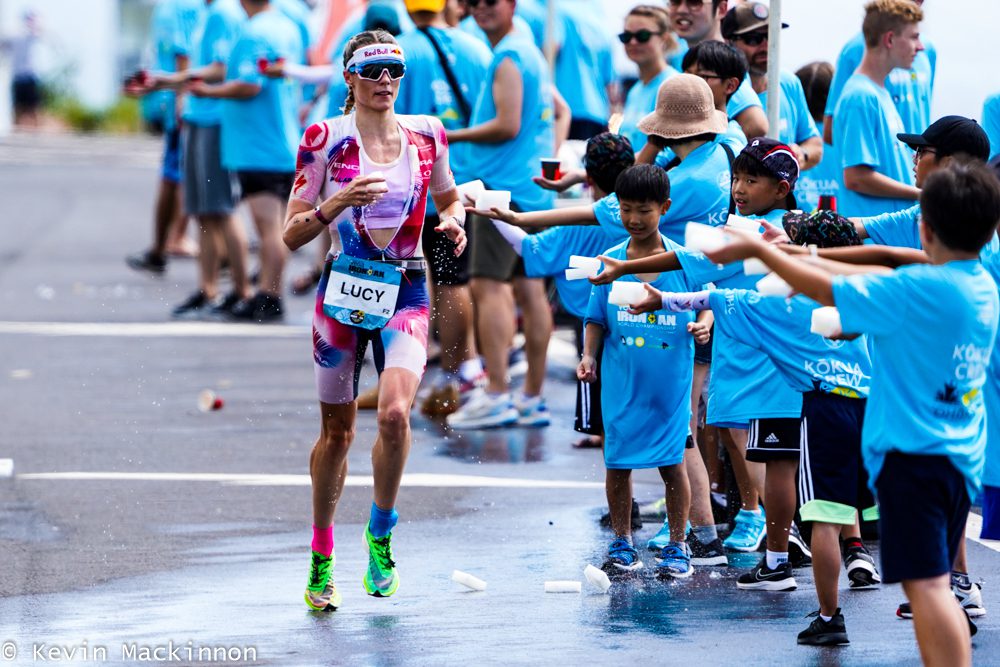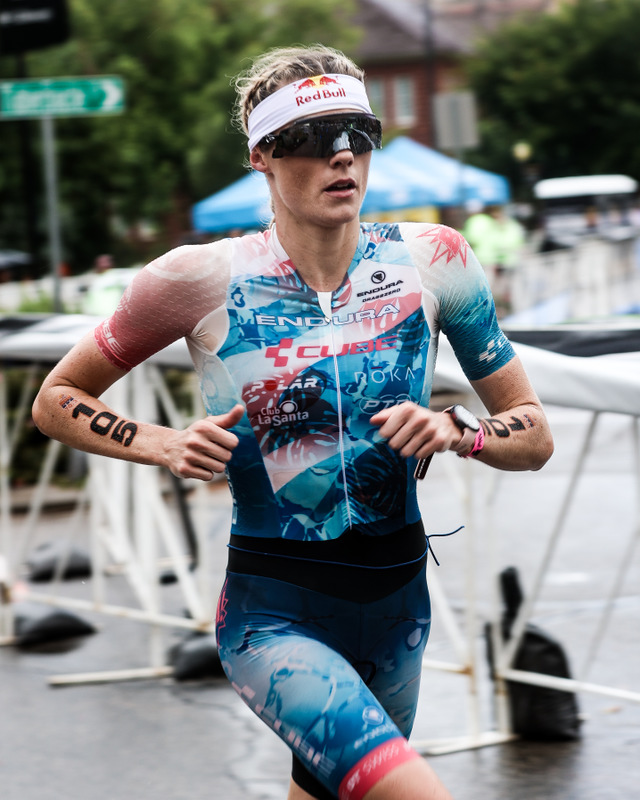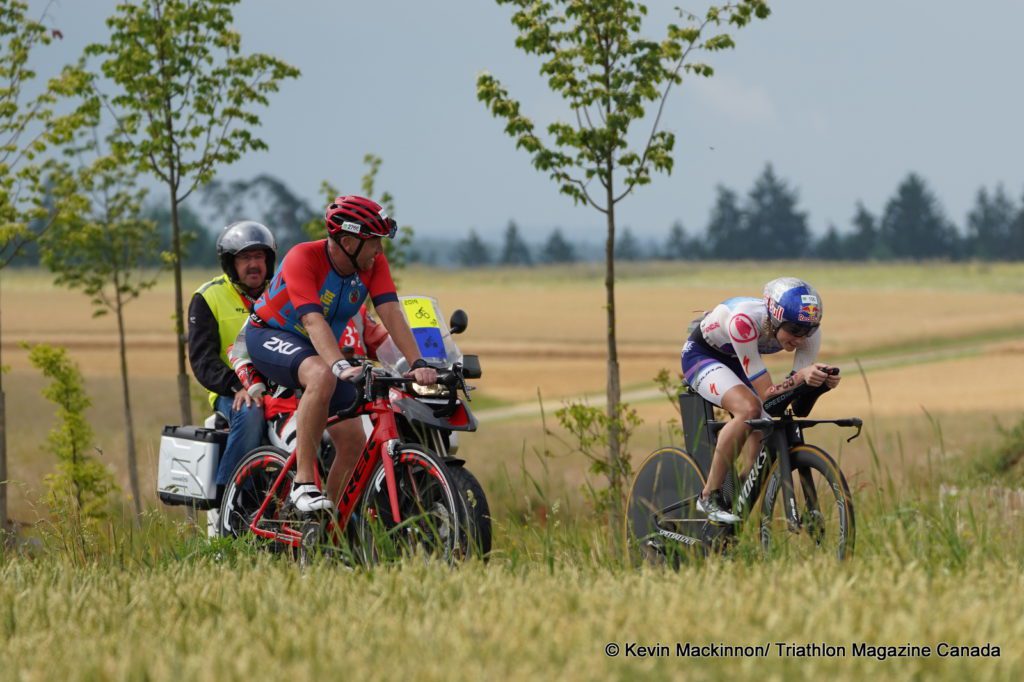Can Lucy Charles-Barclay go 7:21 for a full-distance tri?
British star sets her sights on the men's fastest full-distance time in June
 Photo by:
Kevin Mackinnon
Photo by:
Kevin Mackinnon
Yesterday we reported on the venue and date for the upcoming Sub7/ Sub8 project. There was one thing in the announcement, though, that really stood out – the time goal Lucy Charles-Barclay expressed. She says that she doesn’t just want to break the 8-hour barrier at the event – she wants to match Kristian Blummenfelt’s 7:21 clocking from Ironman Cozumel last November.
“For me, the climate is really important as it will allow for an incredibly fast bike leg where the most amount of time can be saved,” said Charles-Barclay. “The calm water swim will also create an opportunity to start the challenge in the best possible way – fast – and that is what I want to do so I can not only beat Sub8, but also match the current men’s time of 7h21m.”
The Sub7/ Sub 8 project is going to be run very much like the Nike Sub-2 project a few years ago. The four athletes involved in the project – Charles-Barclay, Blummenfelt, Alistair Brownlee and Nicola Spirig will all have pacers to help them through the day. That means they’ll be able to organize some fast swimmers to draft behind, find themselves a big ol’ pack of riders to help them blast through the bike, then likely enjoy some pacing and drafting on the run, too. (Remember, there’s still gains of 10 to 14 per cent to be had during the run if you’re tucked in behind someone.)
Until Jan Frodeno went 7:27:53 at the Tri Battle Royale last year, followed by Blummenfelt’s 7:21:12 in Cozumel, it appeared that the women’s sub-8 goal was going to be considerably more attainable than the men’s. Before those times were posted, the men’s “record” sat at 7:35:39 – Frodeno’s time from Challenge Roth in 2016. The women’s record is also from Challenge Roth – Chrissie Wellington’s 8:18:13 in 2011. Dropping just over 18 minutes would appear to be a much more attainable goal.

Charles-Barclay appears to be throwing that right out the window, though – she wants to go almost an hour faster than Wellington’s record-setting effort in Roth. In Cozumel Blummenfelt went 39:41 thanks to a down-current swim, finished the bike in 4:02:40, then did the marathon run in 2:35:24. As good a runner as Charles-Barclay is, she’s only broken the three-hour barrier in a full-distance race a couple of times – she went 2:59:32 in winning Ironman South Africa in 2019, and then went 2:59:42 to take Challenge Roth that same year. (Yes, I hear you – her running has improved a lot since then, as we saw with her win in St. George last year where she took her first world championship with the day’s fastest swim, bike and run.) No matter how much she’s improved, though, it’s hard to imagine that Charles-Barclay has a 2:35 in her – last October she ran the London marathon in 2:47:58. So, after a 3.8 km swim and a 180-km bike, even if she’s been able to draft through those two efforts, a 2:50 marathon would seem to be a reasonable goal.
So where does that put her 7:21 goal? As a former national team swimmer, Charles-Barclay is hands down one of the best swimmers in the sport. Her biggest challenge for the swim is going to be finding someone, let alone a group of someones, to pull her along. There just aren’t a lot of people who swim that fast. If she can find some swim-types who can help, let’s assume she can finish the swim in 39 or 40 mins, the same time that Blummenfelt went.
That brings us to the bike. If she’s got to make up about 15 minutes on Blummenfelt based on the predicted 2:50 marathon, that means she’ll need to do a 3:47 bike ride. To do that she’ll need to average 47.6 kph. Charles-Barclay went 4:38:10 in Kona in 2018 riding all by herself – that’s an average of just under 39 kph. She’ll need to go almost 9 kph faster in Germany in June. As crazy as that sounds, with the right people in front of her, that could be an attainable goal. Does sitting in a pack provide 25 per cent advantage? If so, that would be pretty much bang on for Charles-Barclay to hit that speedy 47.6 average.

Sub-8 … a no-brainer
So, if we’re saying that 7:21 could be in Charles-Barclay’s wheelhouse, going under eight hours should be a no-brainer, right? There are a few provisos to all this. About a month before the Sub7/ Sub8 race Charles-Barclay will be looking to take her first Ironman World Championship (full-distance, anyway) in St. George. That’ll be a tough course and to take the win she’ll no-doubt have to push to her limits.
Can she come back from that a month later?
Based on her previous race history, the answer to that is probably yes. In 2017 she won Ironman Lanzarote, then two weeks later won the Challenge Championship thanks to a crazy-fast last 5 km that saw four women contend for the win. She bounces back quickly! The bigger question will be whether or not she has the bike skills to get the most out of sitting in a pack. Anyone who watched Charles-Barclay’s impressive World Triathlon Championship Series debut in Leeds last year will remember that while Charles-Barclay was a powerhouse on the bike, she never seemed to get comfortable riding in the group. In Abu Dhabi last November she eventually got dropped by the lead group, never seemingly comfortable enough with the close-quarter racing to remain in the bunch.
So where does that put the Sub-8 effort? To me that’s likely very attainable. 7:21? That’ll be more of a stretch. But, by going after the one, Lucy Charles-Barclay will very likely achieve the other.
